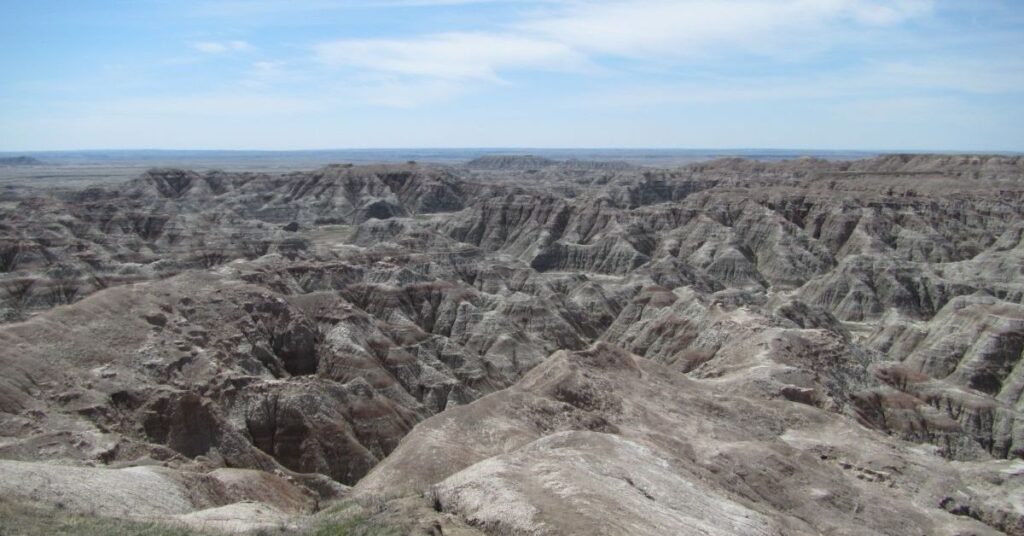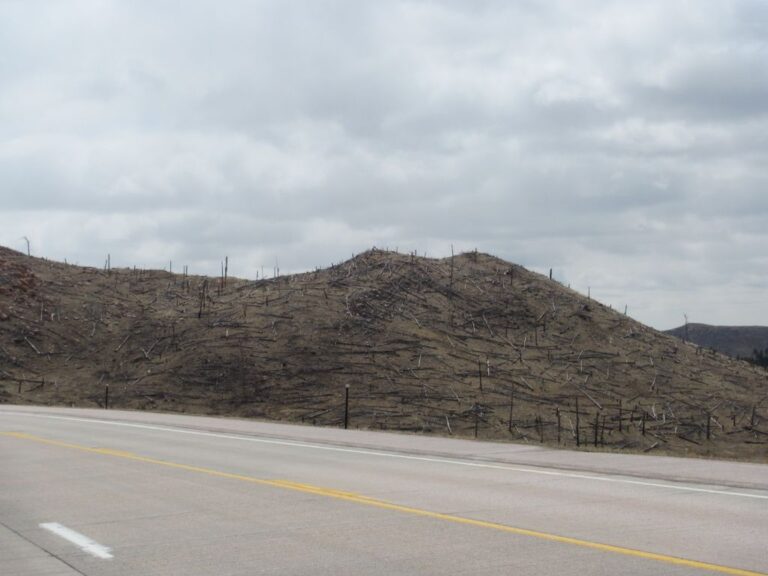
As we were leaving Wind Cave National Park we noticed that many of the hills we were driving past had few trees on them, while other hills had full tree coverage. Logging? We later discovered that a huge fire swept thru this area in 2000 and the tree coverage had not yet regrown.
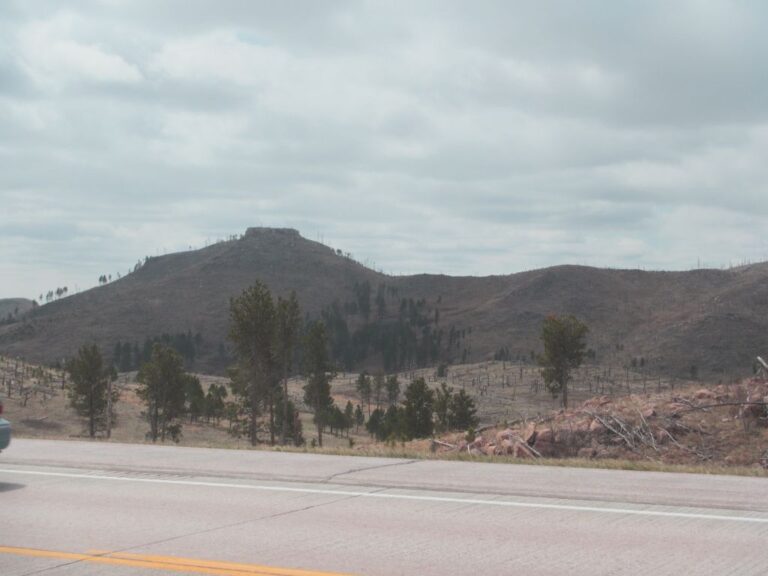
Mount Rushmore was very close to our planned route to the Badlands, so we decided to drop by and have a look. My first impression was that the carved faces were smaller than I expected. My next thought was how did the sculptor manage to get such realistic faces?
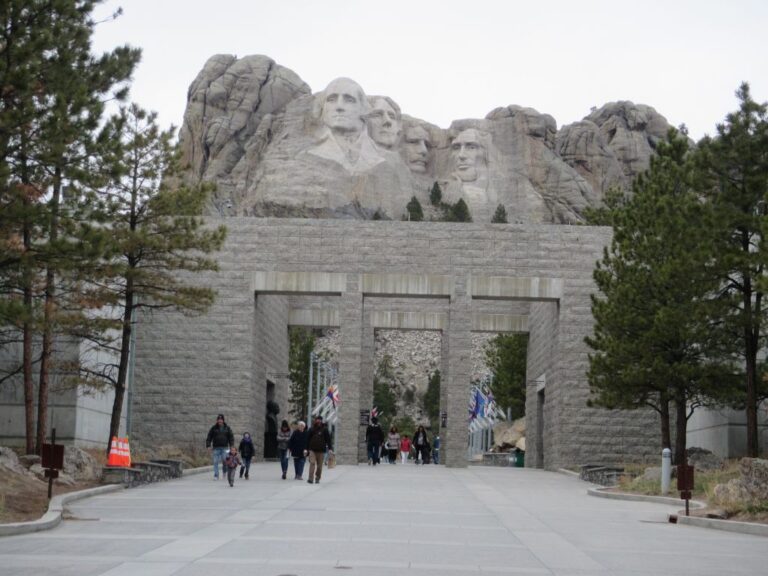
The work took from 1927 to 1941 to complete. Workers used dynamite to start, then switched to compressed air drills (same a used in the mining industry) and then finished using hand tools. Total cost for this work was US$989,992.32 (about $18m in current dollars).
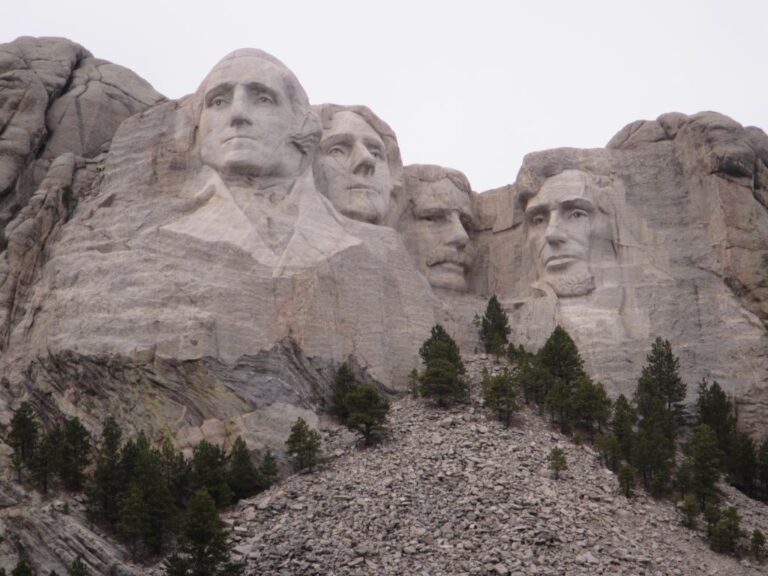
The Cedar Pass Campground inside the Badlands National Park had amazing views.
Unfortunately, management of the campground had been given to a private contractor who also managed the associated lodge (hotel). Our guess is that the contractor came from the hotel industry as they had no clue as to how to run a campground. When we made our reservation there was no way to select a site. When we called to ask about this we were told that we could have a note added to the file if we wanted. When we got to the campground the person manning the entry booth said that they had no system for managing reservations or sites, so just go and pick one. They suggested that sites 7 and 9 may be available for the length of our stay. Driving around we found that site 7 was taken, so 11 it was.
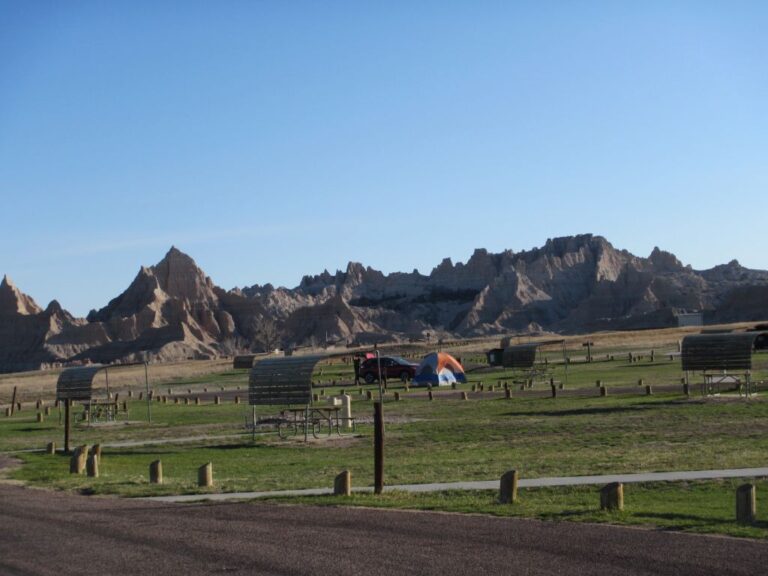
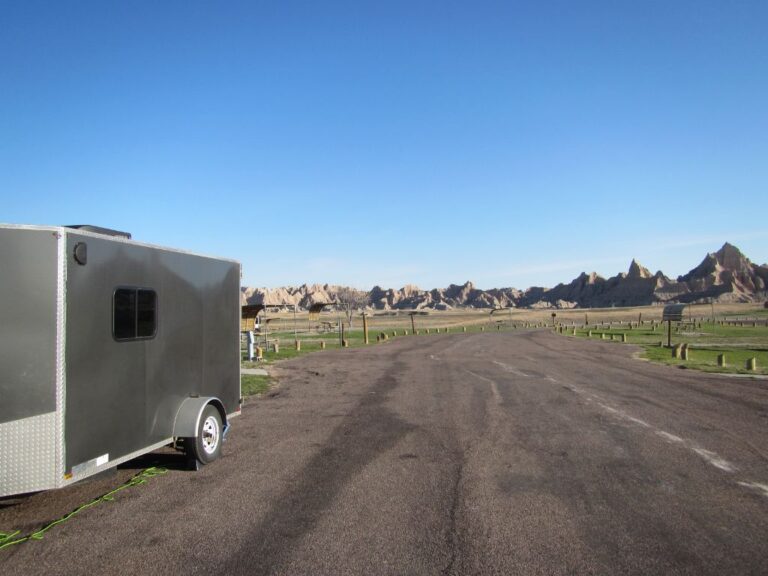
All of the sites in the campground are really just locations along the campground road where electrical outlets are located. Site 11 had a sign “Campground Host” on it, but it was the only site we could find we electricity.
We kept getting people stopping to ask us questions, so I finally took duct tape and covered up the sign.
Great view from the campsite though.
Dogs are only allowed on the gravel roads in the park, so our dog walks weren’t exciting, although bison were freely roaming around (see Wind Cave post for information about how to correctly pet bison).
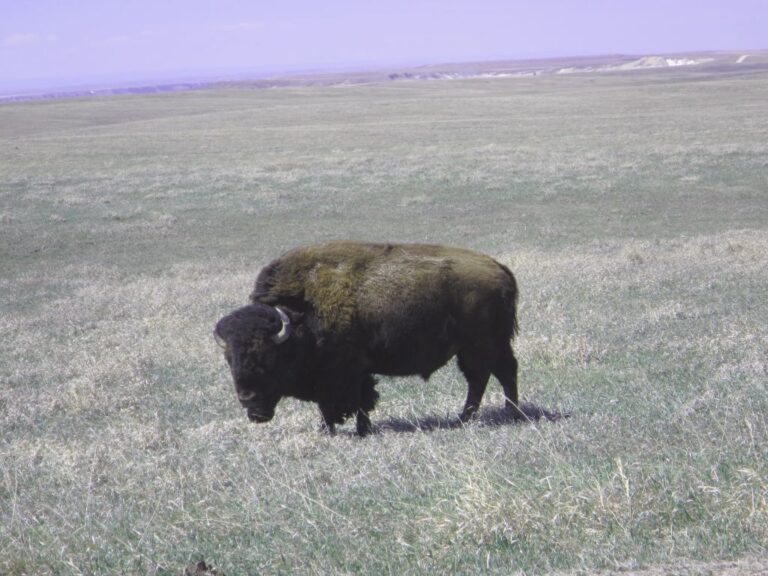
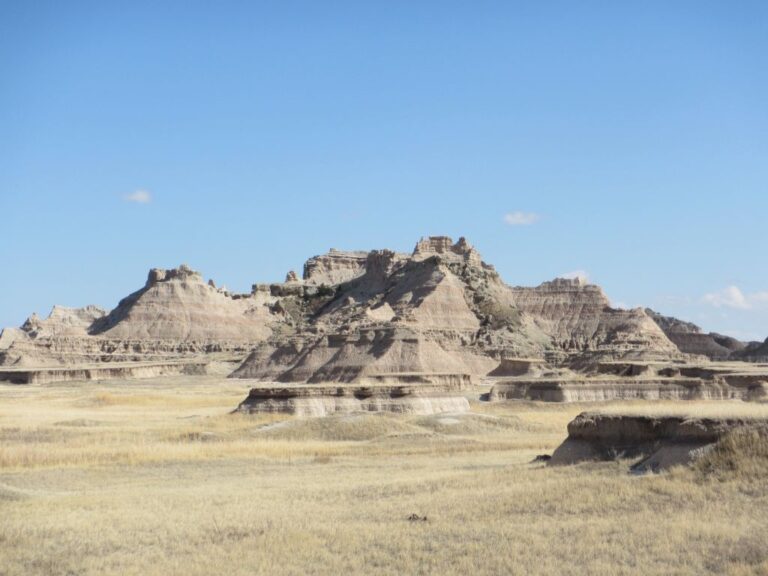
The Badlands geology comes in two forms: mountains, tallest rises about 1000′, and canyons, lowest is about 700′ below the surrounding surface.
A thirty minute drive from the campground got us to Wall, South Dakota. Wall is famous for its drug store, which attracts about 2 million visitors a year. Cheap drugs? Nope.
Originally opened in 1931 business was very slow and the store’s survival was in doubt. The store owner’s wife came up with the idea of offering free ice water to people travelling to see the newly opened Mount Rushmore attraction.
Wall Drug, as it is now known, has grown to 76,000 square feet and includes restaurants, art galleries, retail stores and a whole lotta kitsch. Can you spot the connection to the 1988 Tom’ Hanks film “Big”?
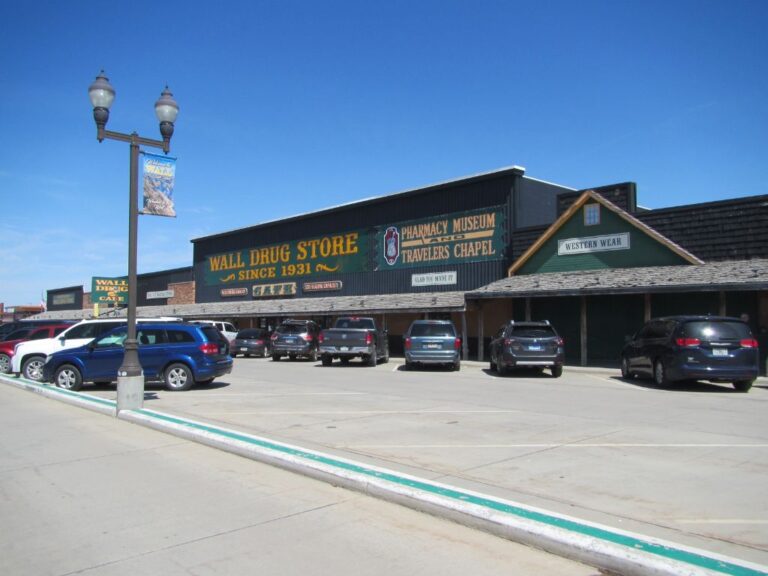
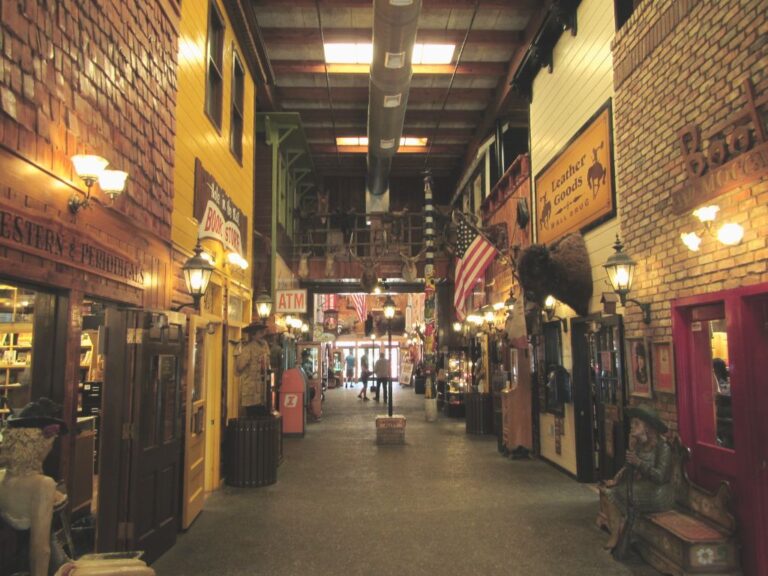
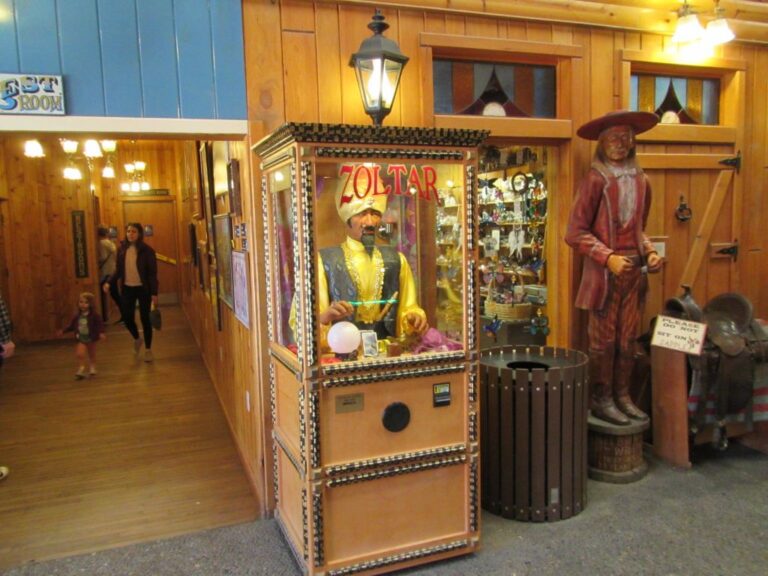
In 1957 when Russia successfully launched the Sputnik satellite, the US military was more concerned with the R-7 rocket that was used to launch the satellite into space. This rocket gave Russia the ability to drop a nuclear missile anywhere on the continental United States. At the time the US military did not have a similar capability. And the arms race is off and running!
A key piece of the US side of the Mutually Assured Destruction (MAD) strategy was the creation of 1000 Intercontinental Ballistic Missiles (ICBM). These missiles were housed in underground silos spread out over Wyoming, Montana, North Dakota and South Dakota. The locations were chosen for their proximity to the Canadian border (the missiles would fly over the North Pole and needed to be located as close as possible to maximize their effective range), and also needed to be located in areas with the lowest possible population density in case of attack by Russian missiles.
A team of two people manned each silo and were responsible for the fast launch of their missile if the command was received. There are still 400 missile silo sites in operation today (the other sites were decommissioned as a result of the START treaty).
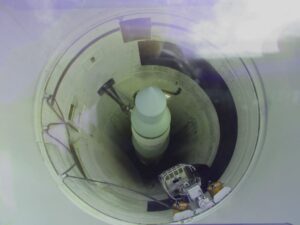
Missile inside silo, waiting for launch.
Silo cover hatch, which would slide to the side for missile launch. Note, the glass covering in the photo is for visitor viewing of the missile inside the silo, and is not present in active missile silos.
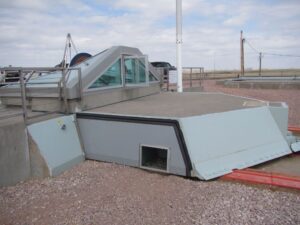
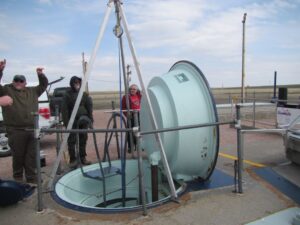
Maintenance access hatch for silo. When we were visiting the site the National Park Service was doing maintenance on the silo, so we got to see this hatch open.
Trip Summary:
Depart: Wind Cave National Park (Elk Mountain Campground), SD 11:15 am Apr 22; Odometer: 137917 miles
Arrive: Badlands National Park (Cedar Pass Campground), SD 4:30 pm Apr 22; Odometer: 138070 miles
Gas Summary:
Wall, SD (Apr 24): 18.8 g @ $4.12/g ($74.27) – ODO 138113 miles

